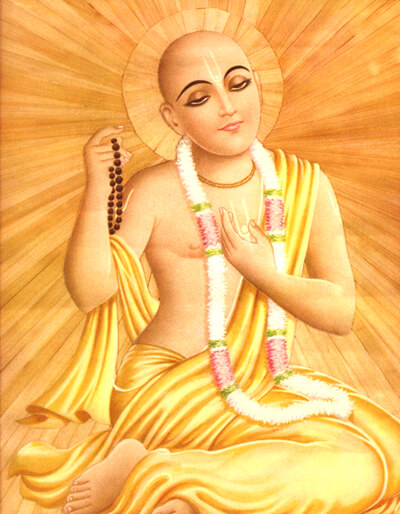Chaitanya Mahaprabhu vs. Sant Rampal Ji Maharaj: A Scriptural Comparison of Spiritual Knowledge
Chaitanya Mahaprabhu (1486–1534 CE), a revered Vaishnav saint and founder of the Gaudiya Vaishnavism movement, is celebrated as an incarnation of Lord Krishna by his followers. He emphasized ecstatic devotion (bhakti), congregational chanting (sankirtan) of the Hare Krishna mantra, and complete surrender to Krishna as the Supreme God. While his contribution to the Bhakti movement is significant, a deeper examination of his teachings in light of scriptural evidence reveals several areas where the knowledge given by Sant Rampal Ji Maharaj presents a more comprehensive and accurate path to salvation.
1. Who is the Supreme God?
Chaitanya Mahaprabhu’s View: He regarded Krishna as the Supreme God and the only object of devotion. His mantra was:
“Hare Krishna Hare Krishna Krishna Krishna Hare Hare Hare Rama Hare Rama Rama Rama Hare Hare”
Sant Rampal Ji Maharaj’s View: According to Sant Rampal Ji, the Supreme God is Kabir Saheb (Kavir Dev), not Krishna. He proves this through multiple scriptures:
- Bhagavad Gita 15:17 – Mentions a Supreme Purush (Supreme God) who is above both the perishable (Kshar) and imperishable (Akshar).
- Yajurveda 29:25, Rigveda Mandal 9 Sukt 96 Mantra 17 – Clearly identify Kavir Dev as the Creator and Supreme Being.
Conclusion: Krishna himself acknowledges a higher Supreme Being in the Gita, confirming the stance of Sant Rampal Ji.
2. Path to Salvation
Chaitanya Mahaprabhu: He emphasized emotional devotion (bhakti) and naam-sankirtan (chanting the name of Krishna) as the way to attain God.
Sant Rampal Ji Maharaj: He teaches that emotional devotion alone is not sufficient. Salvation requires:
- Taking initiation from a Tatvadarshi Saint (Gita 4:34).
- Chanting the true mantras (Om + Tat + Sat) revealed by the Supreme God.
- Abandoning the worship of lower gods (Gita 7:12-18) who cannot grant liberation.
Conclusion: Mere emotional devotion without scriptural alignment leads to incomplete results. True worship must follow the instructions of a complete Saint who knows the Supreme God.
3. Nature of God and His Form
Chaitanya Mahaprabhu: Promoted the idea of Krishna as “Satchidananda Vigrah,” believing God is personal, blissful, and full of consciousness.
Sant Rampal Ji Maharaj: Agrees that God has a form but clarifies that the eternal form is of God Kabir, who resides in Satlok (eternal abode). This is supported by:
- Rigveda 9.96.18 – The Supreme God comes in human form and imparts true knowledge.
- Bhagavad Gita 8:9 – Refers to the Supreme as “Kavim Purāṇam,” pointing to Kavir Dev (Kabir).
Conclusion: Both believe God has a form, but the identity and location differ. Sant Rampal Ji provides direct scriptural citations.
4. Mantra and Method of Worship
Chaitanya Mahaprabhu: Advocated the chanting of “Hare Krishna” mantra, which is not mentioned anywhere in the Vedas or Gita.
Sant Rampal Ji Maharaj: Teaches mantras revealed in holy scriptures:
- Bhagavad Gita 17:23 – Mentions “Om Tat Sat” as the threefold name of the Supreme.
- These are secret mantras that only a Tatvadarshi Saint can give for moksha.
Conclusion: The “Hare Krishna” mantra, while devotional, is not a Vedic or Gita-approved path for liberation.
5. Recognition by Scriptures
Chaitanya Mahaprabhu: Though highly respected in the Bhakti tradition, his teachings are not directly referenced in ancient scriptures like the Vedas or Gita.
Sant Rampal Ji Maharaj: All his teachings are rooted in and verifiable through:
- Bhagavad Gita
- Vedas
- Quran, Bible, Guru Granth Sahib
He fulfills the definition of a Tatvadarshi Saint mentioned in Gita 4:34 and is guiding devotees on the complete path of salvation.
Final Thoughts
Chaitanya Mahaprabhu was a revered saint who inspired devotional fervor. However, Sant Rampal Ji Maharaj presents a more complete and scripturally validated spiritual path that leads to actual liberation. While both figures promote bhakti, Sant Rampal Ji emphasizes scriptural alignment, correct mantras, and a complete understanding of the Supreme God, which is essential in attaining salvation.
 Minutes to read.
Minutes to read.

